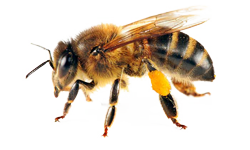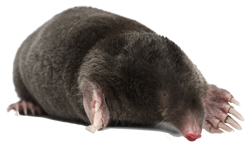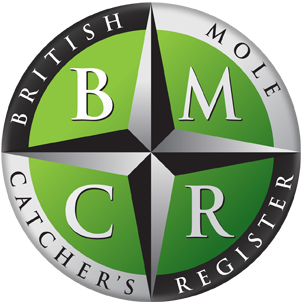Bees
Bee Season:
Spring / Summer
Identifying Bees
There are 3 main types of bee: Honey Bees, Bumble Bees & Masonry Bees.Honey Bees
The honey produced by Honey Bees is used to feed themselves and their larvae. Some Honey Bees are solitary and some live in colonies. There are Honey Bees that will sting you and some that won't. A Honey Bee will die once it has used it's sting.On their own a Honey Bee rarely presents a problem, but can cause serious problems when they swarm. Chimneys and wall cavities are the preferred nest site of a Honey Bee. A nest must be removed or sealed in once it has been successfully destroyed. This is because other bees and insects can attracted by any residual honey or dead grubs left in the nest.
Bumble Bees
Bumblebees consist of the queen bee and her worker bees and tend to live in colonies. The queen bee can be spotted form February on-wards searching for potential nest sites. She is very large, and feeds on flowers such as bluebells, willow catkins, and lungwort.By mid-summer the queen starts laying her eggs. Some species of Bumble Bee nest underground, others nest above the ground in leaves or long grass etc. A nest can be comprised of several hundred worker bees. Bumble Bees live for one year.
Masonry Bees
Masonry Bees are solitary insects and are normally harmless, unlike the Honey Bee. Masonry Bees can be found living in small excavations made from sand and other particles which are glued together with the bees saliva.Their nest building behaviors are what makes a nuisance of the Masonry Bee. They can tunnel through soft brick mortar causing instability in the walls of your home. Masonry Bees can cause problems over all seasons due to repeated attacks.
Bee Treatment
To treat your bee problem quickly and discreetly get in touch now.Based in Guisborough in North Yorkshire we operate within a 20 mile radius including the following towns: Great Ayton, Stokesley, Northallerton, Staithes, Whitby, Castleton.
| Mobile: | 07811 319158 |
| Email: | Click to Email |

